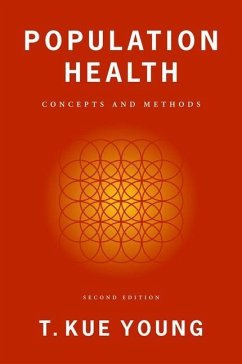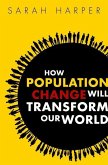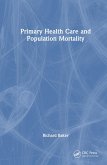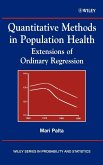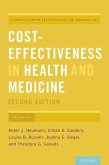The many positive features of the first edition have been retained, such as the extensive use of boxes, case studies, and exercises; the selection of examples representing a variety of health problems, geographic regions, and historical periods; and a multidisciplinary orientation bridging the quantitative and qualitative, the social and biomedical sciences. The book aims to spark a new kind of broad-based training for researchers and practitioners of population health.
Population health encompasses traditional public health and preventive medicine but emphasizes the full range of health determinants affecting the entire population rather than only ill or high-risk individuals. The population health approach integrates the social and biological, the quantitative and qualitative, recognizing the importance of social and cultural factors in practice and research. This text is organized around the logical sequence of studying and attempting to improve the health of populations; measuring health status and disease burden, identifying and modeling health determinants, assessing health risks and inferring causation, designing research studies, planning interventions, and evaluating health programs. The second edition incorporates many new topics that reflect changes in contemporary public health concerns and our response to them; as well as shifts in research directions. These include lifecourse approaches to health, gene-environment interactions, emergent infections, and bioterrorism. Among the specific changes are new or expanded discussions of confidence intervals for commonly used rates, the impact of population aging on mortality trends, health survey questionnaires, summary measures of population health, the new International Classification of Functioning, Disability and Health, migrant studies, race and ethinicity, psychoneuroendocrine pathways, social epidemiology, risk perception, communicating the SARS epidemic, ecologic studies, the odds radio, paticipatory research, suicide, evidence-based community interventions, evaluation methods and health economics, the Cochrane Collaboration, and systemic reviews. The many positivefeatures of the first edition have been retained, such as the extensive use of boxes, case studies, and exercises; the selection of examples representing a variety of health problems, geographic regions, and historical periods; and a multidisciplinary orientation bridging the
Hinweis: Dieser Artikel kann nur an eine deutsche Lieferadresse ausgeliefert werden.
Population health encompasses traditional public health and preventive medicine but emphasizes the full range of health determinants affecting the entire population rather than only ill or high-risk individuals. The population health approach integrates the social and biological, the quantitative and qualitative, recognizing the importance of social and cultural factors in practice and research. This text is organized around the logical sequence of studying and attempting to improve the health of populations; measuring health status and disease burden, identifying and modeling health determinants, assessing health risks and inferring causation, designing research studies, planning interventions, and evaluating health programs. The second edition incorporates many new topics that reflect changes in contemporary public health concerns and our response to them; as well as shifts in research directions. These include lifecourse approaches to health, gene-environment interactions, emergent infections, and bioterrorism. Among the specific changes are new or expanded discussions of confidence intervals for commonly used rates, the impact of population aging on mortality trends, health survey questionnaires, summary measures of population health, the new International Classification of Functioning, Disability and Health, migrant studies, race and ethinicity, psychoneuroendocrine pathways, social epidemiology, risk perception, communicating the SARS epidemic, ecologic studies, the odds radio, paticipatory research, suicide, evidence-based community interventions, evaluation methods and health economics, the Cochrane Collaboration, and systemic reviews. The many positivefeatures of the first edition have been retained, such as the extensive use of boxes, case studies, and exercises; the selection of examples representing a variety of health problems, geographic regions, and historical periods; and a multidisciplinary orientation bridging the
Hinweis: Dieser Artikel kann nur an eine deutsche Lieferadresse ausgeliefert werden.

